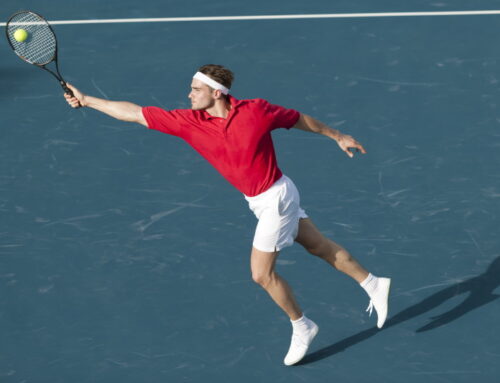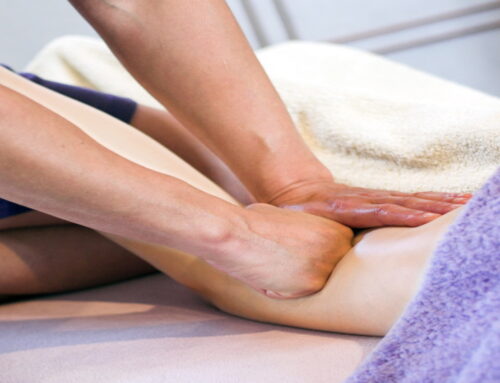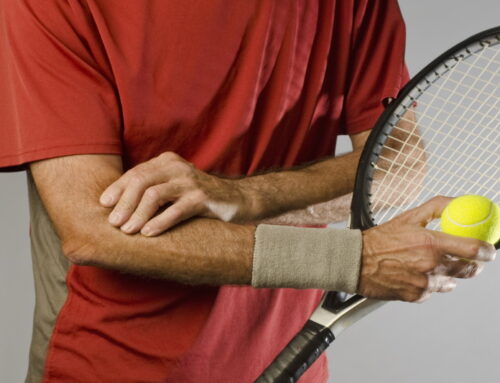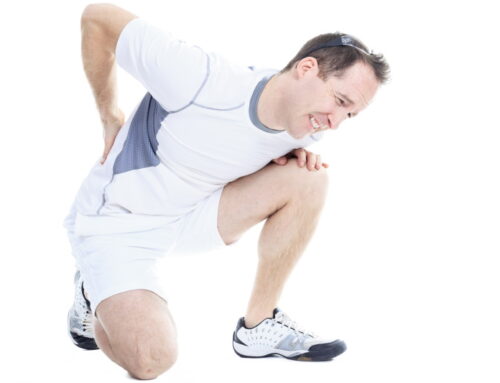Are you Suffering with Tennis Elbow?
What is Tennis Elbow
Tennis Elbow is a condition which affects the extensor tendons of the forearm on the outside of the elbow. The condition leads to the tendon becoming weakened and painful. It has been reported that Tennis Elbow affects between 35% and 50% of all adult recreational tennis players. Symptoms of tennis elbow include pain with griping activities, pain with forearm stretching, pain with extending the wrist against resistance and pain when touched over the outside of the elbow.
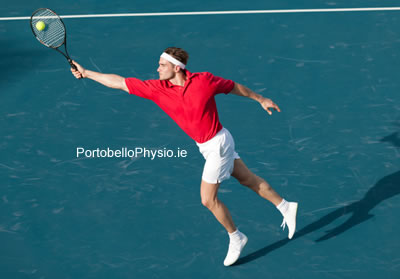
Tennis Elbow is a repetitive overuse condition meaning that the tendon is not able to handle the amount of load being placed on it. As it is an overuse condition the first question you should be asking yourself if you think you are experiencing some of the symptoms listed above is “what have I been doing recently that I was not doing before”. A typical history of a tennis player suffering from the condition involves an increase in the volume of play over the weeks preceding the onset of symptoms. Tennis elbow is a self-limiting condition meaning that most cases will resolve spontaneously over a 12 month period on average. However, if you are eager to speed up this process and return to play earlier than this you need to be proactive in treating the condition.
Preventative Stretches for Tennis Elbow
The first thing that you can do to try and alleviate some of the symptoms is to stretch the muscles involved prior to playing and to warm up properly before stepping on to the court. It is also important to strengthen the muscles involved. Remember that the nature of the condition is a mismatch between the load being placed on the elbow and the elbows ability to handle that same load. By increasing the strength in the tendon you can close the gap between these two entities. See the video below for some basic warm up, stretching and strengthening exercises.
Injury Prevention Strengthening Exercises for Tennis Elbow
Inappropriate technique particularly on the backhand side has been shown to predispose players to tennis elbow. A backhand grip that is too eastern puts the muscle of the forearm in a lengthened position at impact meaning they are being asked to produce the same amount of force in a disadvantageous position. Book a lesson with a Tennis Ireland registered coach to ensure that your technique is not contributing too, or putting you at risk of developing tennis elbow.
Inappropriate equipment in the following areas can lead to tennis elbow:
- Racket: Too heavy a racket will overload the muscles of the forearm, however, too light a racket and will cause to much vibration at impact
- Tennis Balls: Use pressurised tennis balls as these are softer and absorb more of the vibration at impact.
- Strings: Try switching to a multifilament string as they will absorb more of the impact compared to a polyester based string.
- Tension: Try reducing your string tension to below 50lbs. Lower string tension allows the ball to stay on the strings for longer reducing peak impact forces acting on the elbow.
- Grip Size: If the grip is too small the player has to grip the racket harder to stabilise on impact, this greater workload on the muscles can predispose to injury.
Ensure that you buy your equipment from a racket specialist who can advise you on the appropriate equipment for your strength and performance levels.
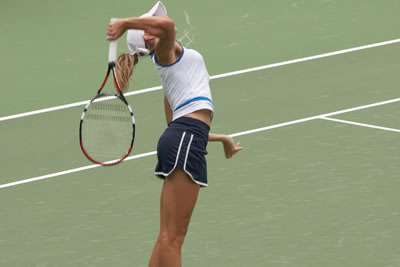
If your tennis elbow symptoms still persist seek the advice of a Chartered Physiotherapist. A Chartered Physiotherapist will be able to assess your strength and flexibility levels and design specific rehabilitation program for your needs. Physiotherapy techniques such as dry needling, kinesio taping, deep tissue massage and joint mobilisations can help to relieve pain and speed up the recovery process. A Chartered Physiotherapist will also be able to advise you regarding how much and how often you should be playing and will guide to through the return to play process.
Download our Sports Performance Clinic Flier (PDF Format)



